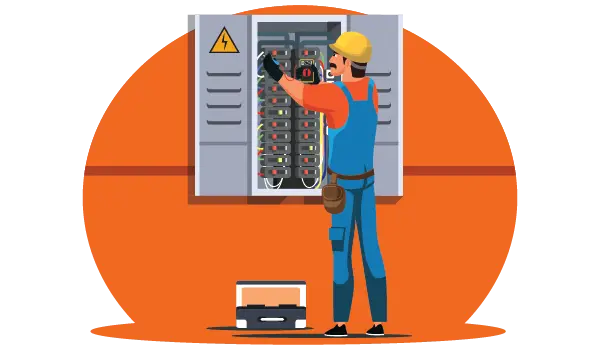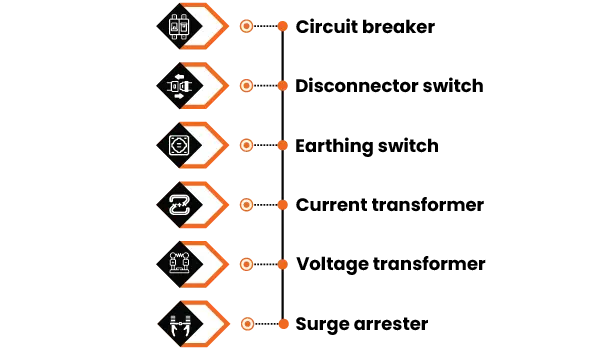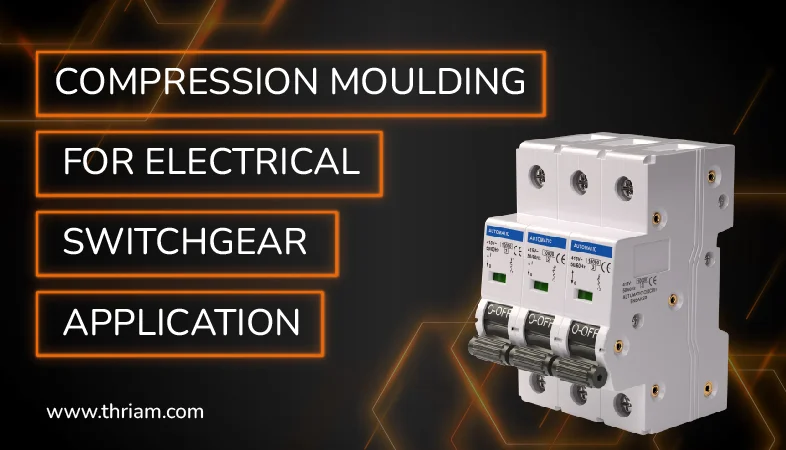A Comprehensive Guide to Electrical Switchgear: Exploring Components and Functions

Introduction to switchgear:

Electrical switchgear is a critical component in modern electrical systems, ensuring the safe and reliable operation of these systems. Switchgear acts as a protective device that enables the control, isolation, and protection of electrical equipment and circuits. In this blog post, we will explore the various components of electrical switchgear and delve into their functions.
Types of switchgear:
There are three main types of switchgear commonly used in electrical systems:
Air-insulated switchgear (AIS):
This type of switchgear uses air as the insulation medium. It is mostly used for low voltage applications and is relatively affordable compared to other types.
Gas-insulated switchgear (GIS):
GIS employs sulfur hexafluoride (SF6) gas as an insulation medium. It is commonly used for high voltage applications and offers compactness and high reliability.
Hybrid switchgear:
Hybrid switchgear combines the best features of AIS and GIS, providing an effective and economic solution for various voltage levels.
Main components of switchgear:
Switchgear consists of several key components that work together to ensure the safe and efficient functioning of electrical systems. Let's take a closer look at these components:

Circuit breaker:
The circuit breaker is the primary component of switchgear responsible for interrupting or breaking the flow of electric current in case of a fault. It protects electrical equipment from damage caused by overload or short-circuit conditions.
Disconnector switch:
The disconnector switch is used for isolating electrical equipment, allowing safe maintenance and repair work to be carried out without disrupting the power supply. It physically disconnects the equipment from the power source.
Earthing switch:
The earthing switch connects the electrical equipment to the earth, providing a safe route for the dissipation of electrical energy during fault conditions. It ensures the safety of personnel and prevents damage to the equipment.
Current transformer:
Current transformers are used to measure and monitor the current flowing through the electrical system. They provide accurate readings to protective relays and meters, allowing for effective protection and control.
Voltage transformer:
Voltage transformers, also known as potential transformers, step down the voltage levels for measurement and control purposes. They convert high voltage to a lower, safer value.
Surge arrester:
Surge arresters are responsible for protecting the electrical system from voltage surges caused by lightning strikes or switching operations. They divert the excess current away from the sensitive equipment, ensuring their safety.
Switchgear functions:
Switchgear serves three primary functions:
Protection:
Switchgear protects electrical equipment and circuits from overloads and short-circuit faults. The circuit breaker and protective relays monitor the system continuously, detecting abnormalities and taking necessary actions to prevent damage.
Isolation:
Switchgear allows the isolation of faulty equipment during maintenance or repair work. By disconnecting the equipment using the disconnector switch or earthing switch, the rest of the system remains operational.
Switching:
Switchgear enables the turning on and off of electrical circuits. It facilitates operations such as connecting power sources, transferring loads, and reconfiguring the electrical system.
Manufacturing Process of Switchgears
Switchgears are vital components in electrical systems and finding their way into various industries. The manufacturing process of switchgear involves several stages, each crucial for ensuring their reliable and safe operation. In this article, we will delve into the manufacturing process of switchgear, explaining each point separately.
Design and Engineering:
The process begins with design and engineering, where experts develop the blueprint for the switchgear. This stage involves understanding the electrical system requirements, determining the type and specifications of switchgear, and designing the layout. Design and engineering play a pivotal role in ensuring the switchgear meets all safety standards and performs its intended functions efficiently.
Component Procurement:
Once the design is finalized, the next step is the procurement of components. This stage involves sourcing high-quality components such as circuit breakers, disconnectors, transformers, and auxiliary equipment from trusted suppliers. Strict quality control measures are implemented to ensure that components meet the required standards and specifications.
Fabrication of Enclosures:
The enclosure, typically made of metal, is an essential part of the switchgear. The fabrication process involves cutting, bending, and welding the metal sheets to form the enclosure according to the design specifications. The enclosure provides protection for the internal components and ensures proper insulation to prevent electrical hazards.
Installation of Components:
In this stage, skilled technicians install the various components into the fabricated enclosure. This includes mounting the circuit breaker, disconnectors, transformers, busbars, and control panels, among others. Each component is carefully positioned according to the design requirements and wired to ensure proper electrical connections.
Wiring and Assembly:
Wiring is a critical step in the manufacturing process. Skilled electricians meticulously wire the switchgear, following the electrical diagrams and ensuring that the connections are secure and accurate. All the components are assembled, interlinked, and tested to ensure that they function harmoniously.
Testing and Quality Assurance:
Switchgear undergoes rigorous testing before leaving the manufacturing facility. Various tests are conducted, including functionality tests, insulation resistance tests, current withstand tests, and circuit breaker operation tests. These tests validate the switchgear's performance, efficiency, and compliance with safety standards.
Finishing and Painting:
In this stage, the switchgear goes through finishing touches. The enclosure is cleaned, polished, and painted to provide a protective and aesthetically pleasing finish. The paint also helps to prevent corrosion and enhance the longevity of the switchgear.
Packaging and Shipment:
The final stage involves packaging the switchgear for safe transportation. Special care is taken to ensure that the switchgear is adequately protected to withstand vibrations, shocks, and other potential damages during transit. Once packaged, the switchgear is ready for shipment to customers or installation sites.
Benefits of using switchgear:
The use of switchgear in electrical systems offers several advantages:
Safe and reliable function:
Switchgear ensures the safe operation of electrical systems by automatically detecting and isolating faults, thus preventing potential hazards.
Convenient and cost-effective:
Switchgear allows for easy maintenance and repairs as it enables the isolation of specific equipment or circuits without disrupting the entire system. This reduces downtime and saves costs associated with power outages.
Conclusion
In conclusion, electrical switchgear plays a crucial role in the protection and control of electrical systems. Through its various components and functions, it ensures the safe and reliable operation of these systems. Switchgear provides a convenient and cost-effective solution, making it an essential part of modern electrical infrastructure. By understanding its components and the benefits it offers, engineers and technicians can make informed decisions about incorporating switchgear into their electrical systems.



